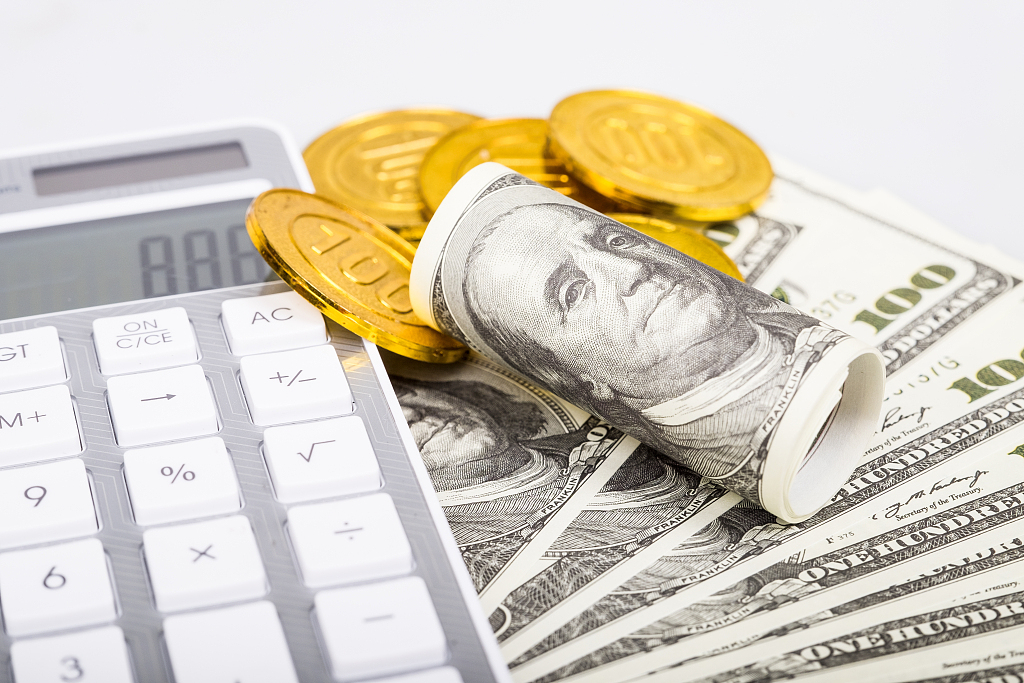
Editor's note: Huang Yongfu is an economic affairs commentator. After his Ph.D., he started working at the University of Cambridge and then moved on to the UN. He is an author of many papers and books in the field of global development. His current interests lie in global development and Sino-U.S. ties, especially trade, financial and technological issues. The article reflects the author's opinions and not necessarily the views of CGTN.
To address a liquidity crunch caused by coronavirus pandemic jitters, the Fed has tapped aggressively its arsenal of crisis-era tools recently. On March 23, 2020 the trade-weighted U.S. Dollar Index hit a record of 102.99 since early February 2017.
As humans encroach on new habitats, feed more animals, heat the planet, new viruses and diseases will become more common. Black swans in terms of low-probability and high-impact events will hit the world from time to time. To better respond to sporadic crises, traditional banking systems, which are inherently crisis-prone, might deserve a serious overhaul or a profound revolution that works for all parties.
A dollar rally weighing on the whole world
Fears of a global slowdown stoke up a scramble for short-term dollar liquidity, where companies and households stampede for dollars to meet various obligations, while unnerved foreign investors flock to U.S. Treasury to tide themselves over in crisis. A looming liquidity crunch is pushing up the dollar value to its historic highs, and exacerbating disarray in markets around the world.
Excessively sharp and sudden appreciation of such a systemically important currency has risked crushing the global economy, especially emerging economies.
First, the dollar's strength is sending currencies of U.S. trading partners tumbling to multi-year lows against the dollar. Since March 9, 2020, the dollar grinded higher by about 6-10 percent against major currencies, including euro, pound, yen and franc. The dollar has inched up more than one percent for only few times against those currencies after Trump taking office. Many emerging-market currencies rigidly pegged to the dollar have also fallen against it significantly, increasing their costs of servicing dollar-denominated external debt and chance of inflation.
Second, the dollar's gains cause a stark reversal of capital flows to emerging countries where investors are ditching emerging-market assets at a furious pace. Many emerging market stock indexes sank to multi-year lows, while the average yield on an index of dollar-denominated emerging-market external debt has blown out to its widest level in recent years.

Third, a strengthening dollar is jacking up commodity prices. Most raw materials such as copper and cotton denominated in dollars will become dearer to foreign buyers. Fourth, although the strong dollar can benefit the U.S. in some aspects, it dents the U.S. competitiveness and reverberates through the U.S. economy. U.S. dollar's appreciation has been a double-edged sword, for both inside and outside the U.S.
Inefficiencies of traditional crisis-era measures
To expand liquidity provisions for domestic small and big businesses and lessen strains in global U.S. dollar funding markets, the Fed has thoroughly resorted to crisis-era tools against a financial solvency panic in 2008, such as swap lines, discount window and funding facility, in addition to rate cut by another 100 basis points, and purchases of Treasury and mortgage securities, also known as quantitative easing, without limit.
However, ingrained defeats exist in these traditional crisis-era tools, regardless of the outcome of current crisis:
First, liquidity demand of companies has not been met sufficiently. Swap lines, discount window and funding facility mainly help address the problem for the banking sector, but not for companies. In fact many companies relieve their liquidity constraint via other means (not banking sector), for example issuing short-term debt in the commercial-paper market.
Second, the cost of borrowing dollars remains elevated. For example, the spread on three-month euro-dollar basis swaps, a contract that enables traders to hedge risk, expanded to minus territory of minus 1.10 percentage points on March 17, its widest level since at least 2012. A negative spread measures the cost of borrowing dollars using euros (or yen) as collateral jumped for banks and investors.
Third, effectiveness of the pass-through mechanism of monetary policy is questioned. It remains to be seen whether central banks' new actions will help firms overcome the stigma attached to sourcing funds and weather a virus-cased liquidity panic rippling through the financial system and economy.
High time for the launch of Central Bank Digital Currencies
To establish a more stable financial system, the idea of central bank digital currencies (CBDCs) has been extensively discussed by the world's central bankers and some CBDCs are already in the works.
The traditional fractional banking system will be replaced by a flat CBDC-based banking system administered mostly by the central bank. The novel system has at least following potentials or benefits:
First, commercial banks will be disintermediated, such that liquidity demand of companies can be better met in a more cost-effective manner. CBDCs will be issued by central banks to everyone, rather than commercial banks, while all deposits will directly go into CBDCs, instead of commercial banks. Traditional commercial banks could become "loanable funds intermediaries," borrowing from central banks to finance long term loans such as mortgages.
Second, broader population would have access via their cell phones to a near free, efficient payment system maintained by the monetary or regulatory authority.
Most existing private digital payment systems, which could be connected to traditional bank accounts or crypto-currencies, will be incorporated into the CBDC-based banking system. Central banks already have a centralized permission private non-distributed ledger that allows for payments and transactions to be facilitated safely and seamlessly. The need for cash will be alleviated.
Third, the pass-through mechanism of monetary policy will be enhanced. Central banks would be in a much better position to channel funds to its best use and regulate risky credit lending decisions to control credit bubbles, avoid bank runs and prevent maturity mismatches.
(If you want to contribute and have specific expertise, please contact us at opinions@cgtn.com)